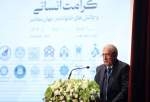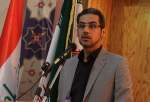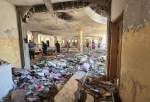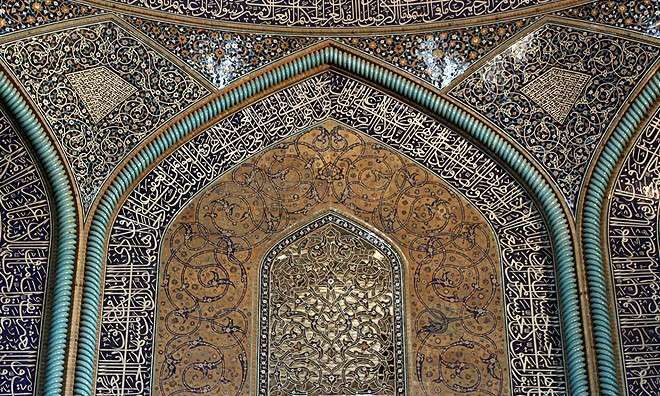
Sheikh Lutf Allah Mosque is one of the architectural masterpieces of Safavid Iranian architecture, standing on the eastern side of Naghsh-i Jahan Square, Isfahan, Iran.
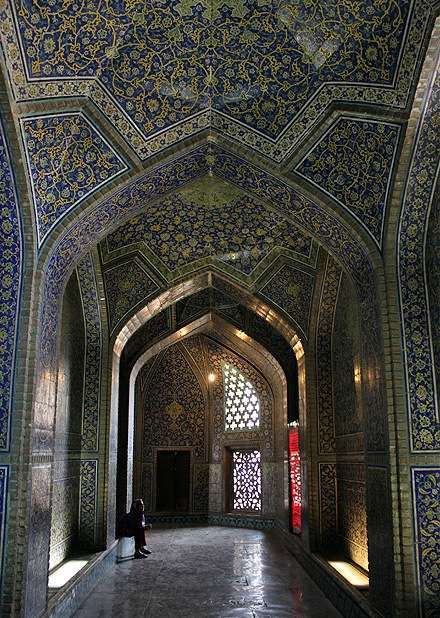
when it was originally built it was a private and luxurious place of worship for Shah Abbas I and the women of his court.
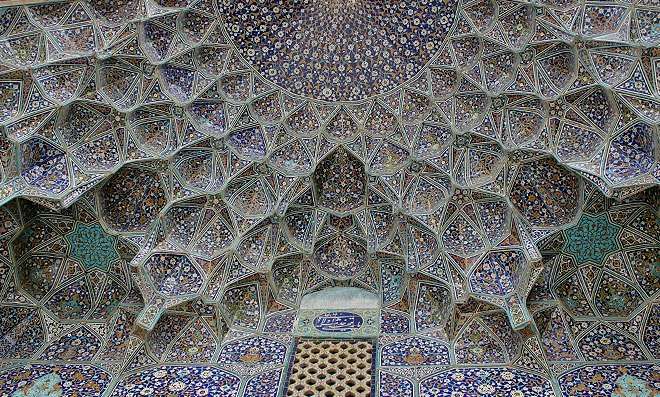
Lavished with elaborate calligraphy of Quranic verses and multi-colored mosaics, the mosque is definitely fit for a king.
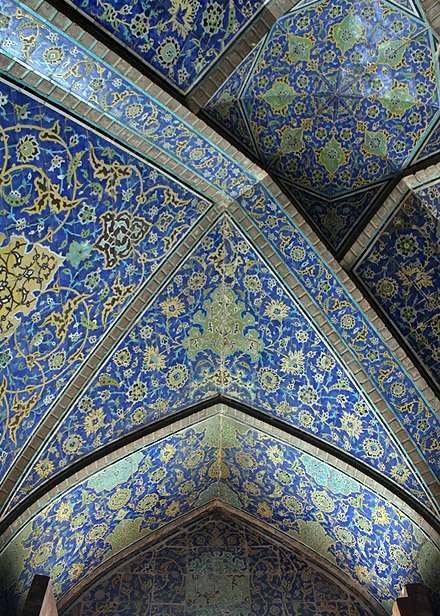
Every tile was laid with precision and the main dome is dominated by a peacock that changes color and shape as light reflects off of the mosque's interior.
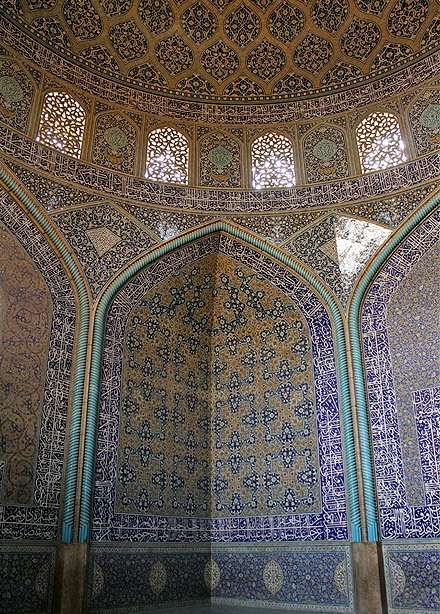
Adjacent to the mosque is the Ali Qapu palace, where Shah Abbas resided with a sizable harem.
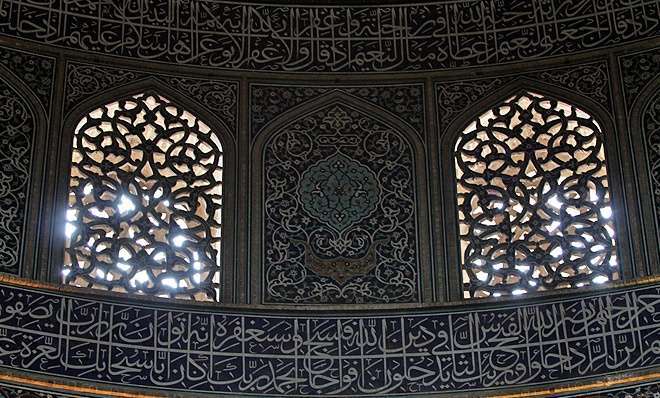
Along with commissioning the mosque, Shah Abbas also commissioned an underground passageway between the palace and the place of worship.
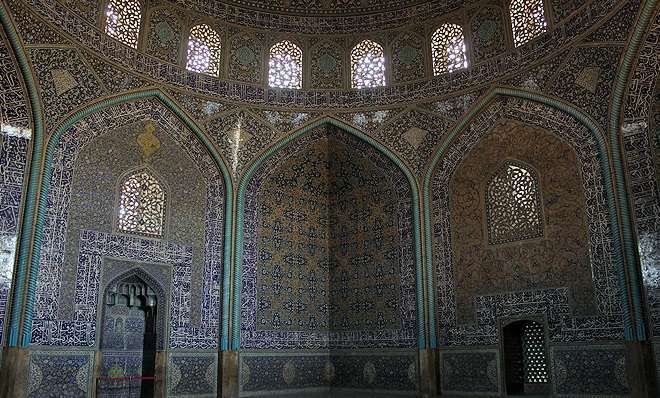
This allowed the women of his harem to secretly make their passage to the mosque without being seen by passerby on the square, thus giving the building its nickname, the Women's Mosque.
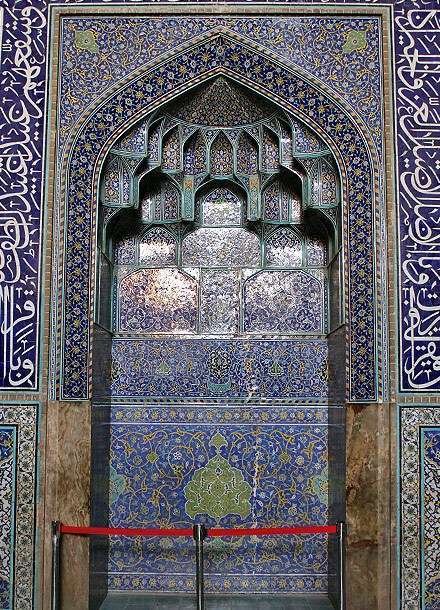
During the 17th century after it was built, the mosque was not open to the public, and served only as a private sanctuary.
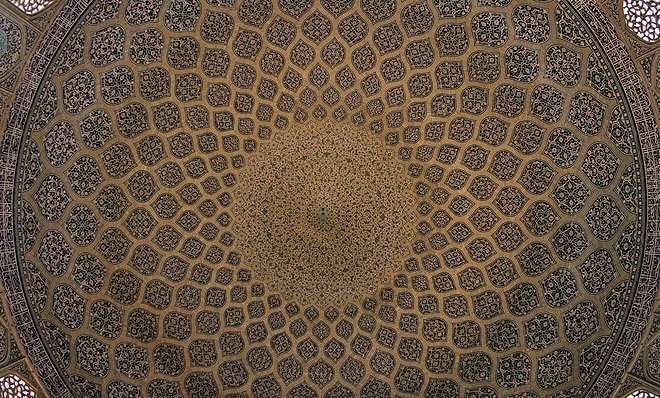
Sheikh Lotfallah Mosque was completed in 1619 after nearly 20 years of work.
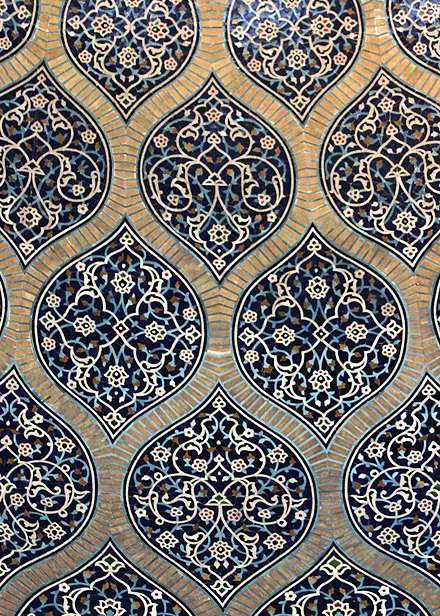
It was built by the chief architect Shaykh Bahai, during the reigh of Shah Abbas I of the Safavid dynasty.
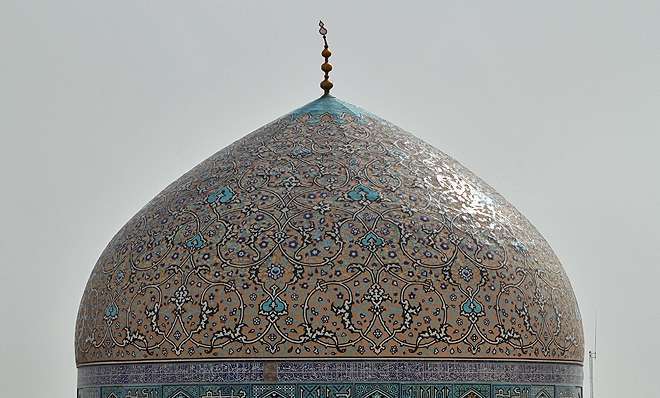
It is registered, along with the Naghsh-i Jahan Square, as a UNESCO World Heritage Site.
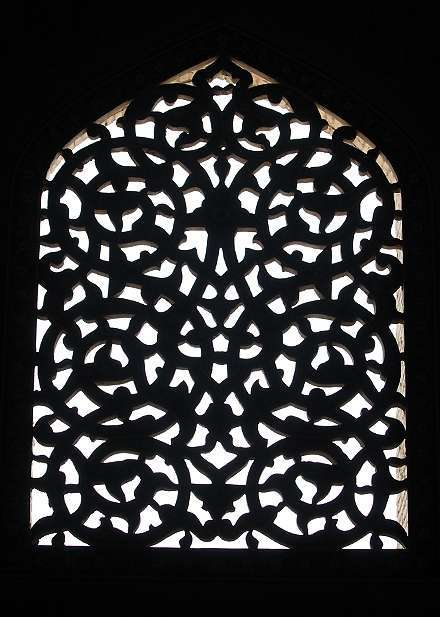
Of the four monuments that dominated the perimeter of the Naqsh-e Jahan Square, this one was the first to be built.
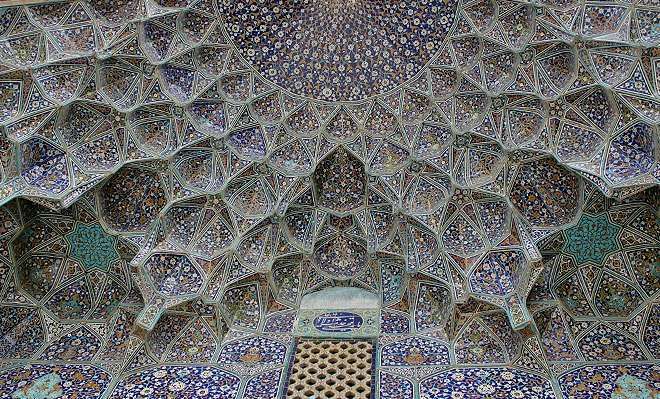
The purpose of this mosque was for it to be a private mosque of the royal court, unlike the Masjed-e Shah, which was meant for the public.
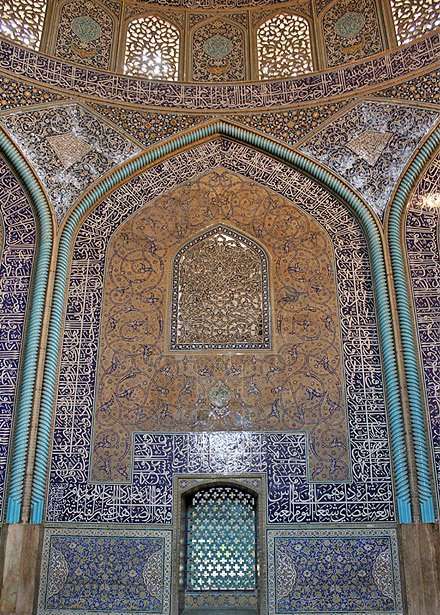
For this reason, the mosque does not have any minarets and is of a smaller size.
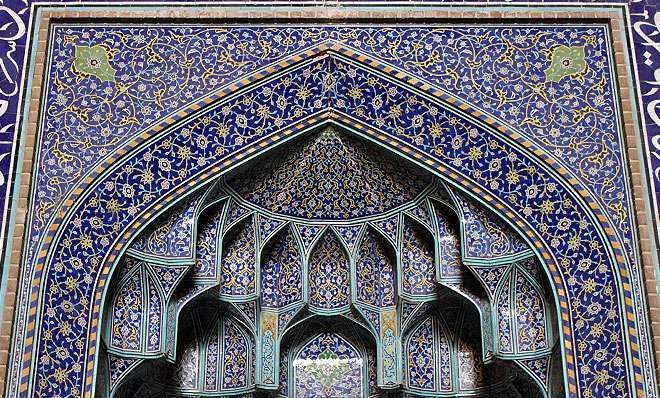
It wasn't until centuries later, when the doors were opened to the public, that ordinary people could admire the effort that Shah Abbas had put into making this a sacred place.
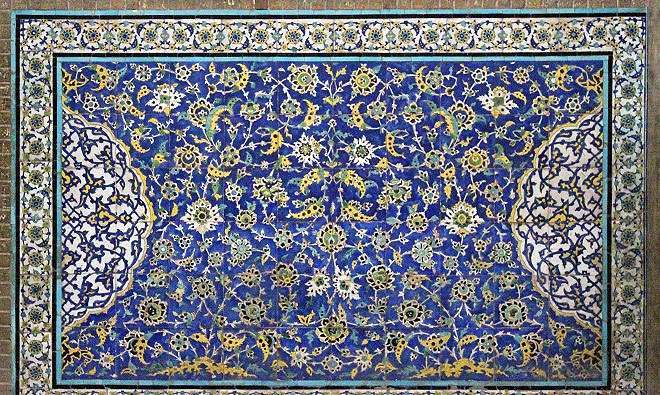
Throughout history, this mosque has been referred to by different names. For Junabadi it was the mosque with the great dome and the domed mosque.
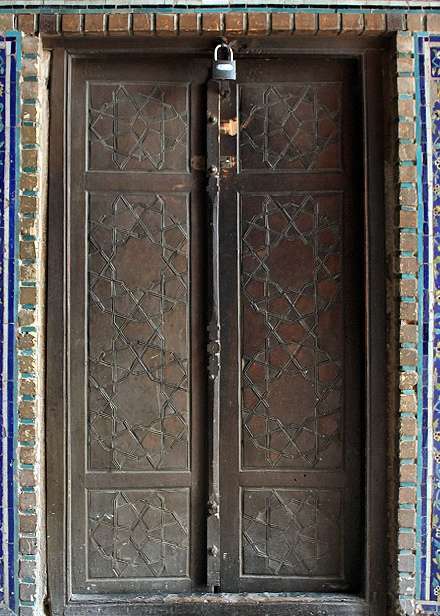
contemporary historian Iskandar Munshi named it the mosque of great purity and beauty.

On the other hand, European travellers, such as Jean Chardin referred to the mosque using the current name, and Arabic incsrictions within the mosque, done by calligrapher Baqir Banai, also include the name of Sheikh Lutfallah.
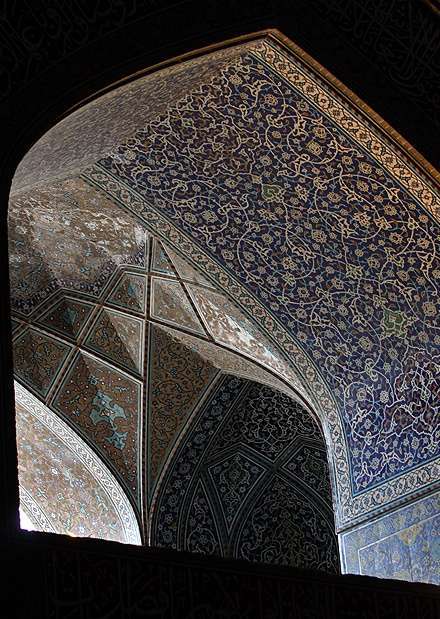
Reza Abbasi's inscription on the entry gateway gives the date of the start of construction
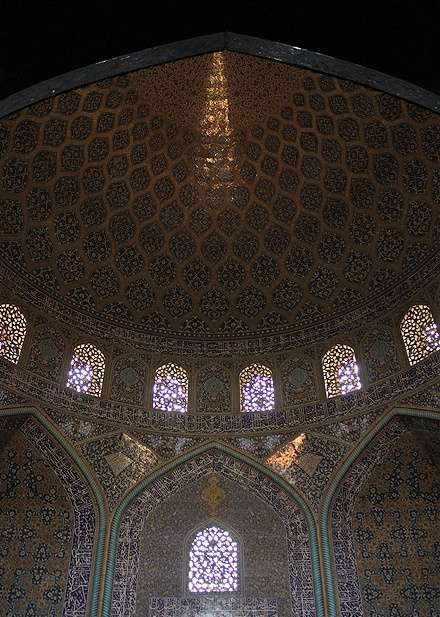
One of the unique characteristics of the mosque is the peacock at the center of its dome.
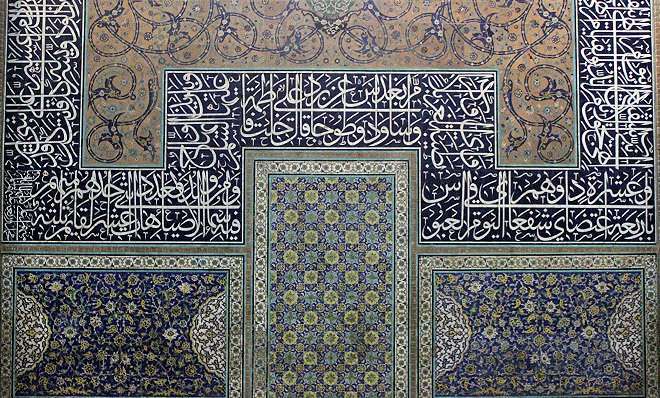
The monument's architect was Mohammad-Reza Isfahani, who solved the problem of the difference between the direction of qibla and gateway of the building by devising an L-shaped connecting vestibule between the entrance and the enclosure.
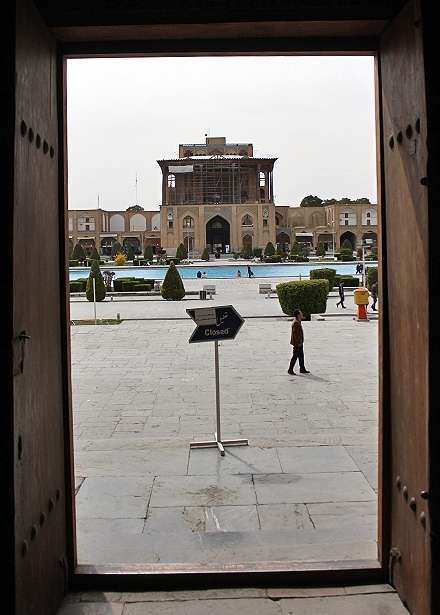
The fact that two poems by Shaykh Bahai, a devoted sufi, grace the walls of Shah Abbas’ private mosque, proves that, although some sufi elements in the empire were suppressed, Sufism as a general phenomenon continued to play an important role in the Safavid society.

























